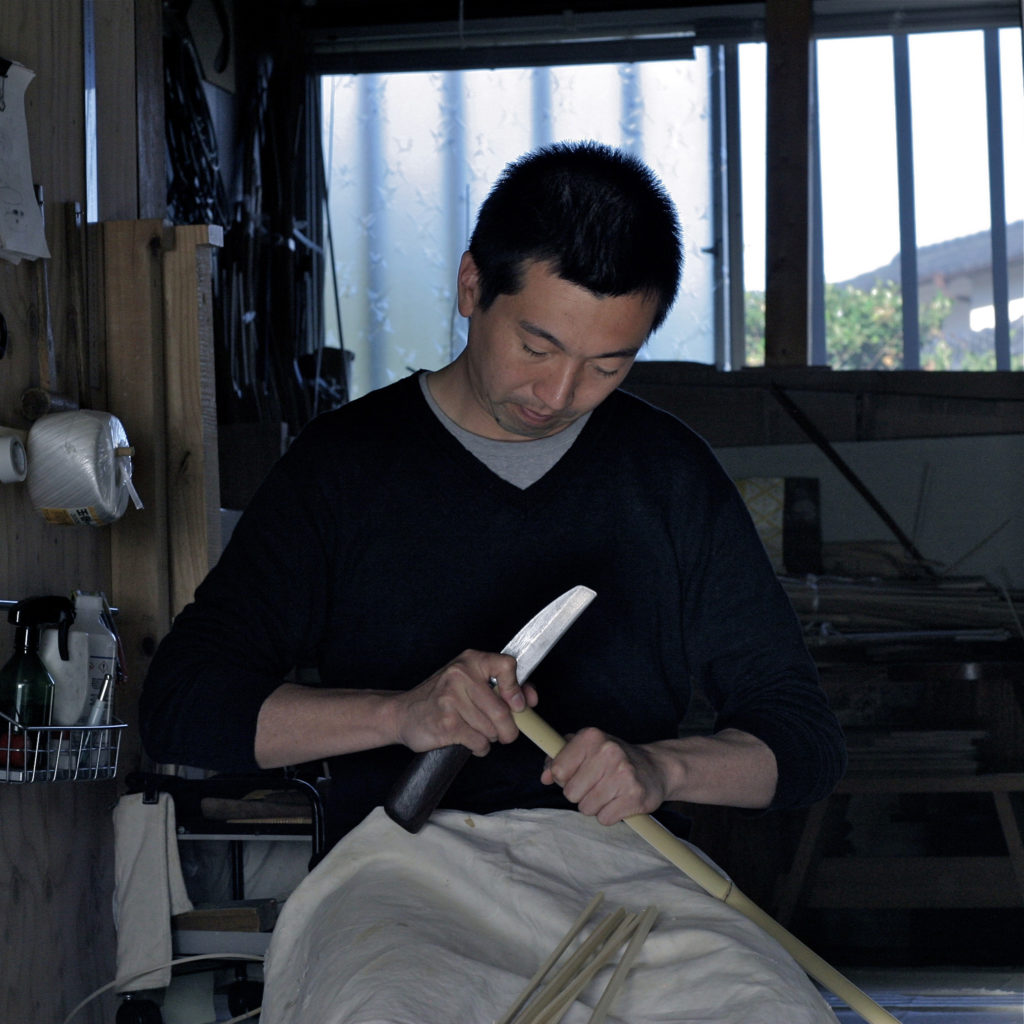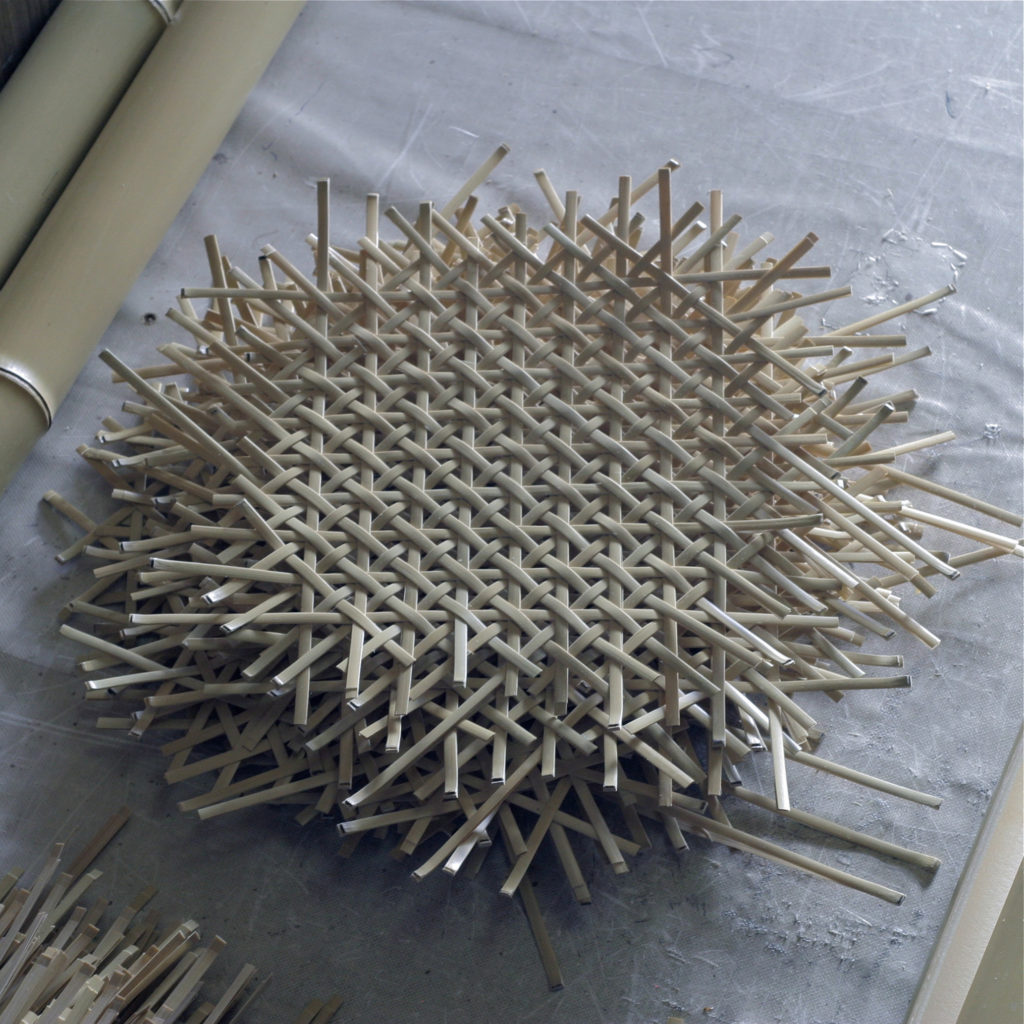Story 03 | Weaving old patterns back together.
“My first experience with bamboo was cutting my own toys from the forest,” says Shigeomi Ohashi. Although he is not from Beppu, Shigeomi, 39, is one of the towns renowned bamboo basket weavers and an example of how bamboo crafts in Beppu are being revived by outsiders. “I’m not from a bamboo family, and i’m not from Beppu,” but he and others like him have come to study the craft of basket weaving, at the only bamboo weaving school in Japan. “A lot of people come to the school but they can’t make a living from basket weaving. It’s important to think about how you can use these skills. I am always thinking about new ways to use the bamboo, apart from basket weaving.” But basket weaving is what keeps him going and what he loves, “I just like the forms that have been around for a long time, I like the fact that it’s a tradition I can carry along.” All traditional craftsmen share this sense of ‘carrying’ a sacred burden, but with bamboo weaving the story is a little different. “Other crafts involve many people but bamboo weaving can be a solitary craft,” says Shigeomi, “you can make anything with bamboo and do it all by yourself.”
It’s not an easily won freedom however; it took Shigeomi five years to learn how to make the identically wide strips for weaving known as ‘higo.’ Shigeomi would purchase culms from Nagai, the Beppu bamboo factory, and then cut the higo by hand with a blade everyday to practice, “you must remember these measurements through your hands,” he says, demonstrating on the floor of his workshop.

The skill of making higo is something which every bamboo weaver understands, but something less obvious today is the challenge of making Japanese people see the value of bamboo in everyday life again. That sensibility is being lost. In Beppu, bamboo baskets were first made by farmers, later when the hot springs became popular the baskets were used in Ryokan (inns), and bought as souvenirs. Beppu took baskets from the farm and put them into the home. But for Shigeomi it’s important to use the baskets in his everyday life to tell where breaks occur, and help refine the weaving. “I also get ideas for improvements from the Beppu flea market,” and he reaches into a cupboard to pull out some old baskets. They’re cracked and stained, but still functional. “These were cheap, but made in a shop owned by a living national treasure, I guess they are 30 years old. What’s strange is that no one can make these patterns anymore.” We’re shocked that knowledge like this could disappear in the bamboo weaving capital of Japan, but Shigeomi is calm and full of equanimity, “we keep only the traditions we need,” he says.
< PAPERSKY no.41(2013)>












